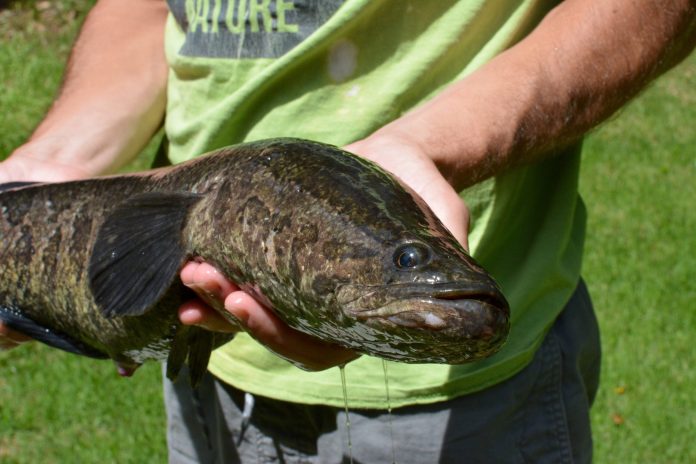On May 19, a 13-inch northern snakehead, an invasive fish from East Asia, was caught in Southeastern, Missouri in the Duck Creek Conservation area. The fish, believed to be about one year old, spells trouble for the region.
Snakeheads are known to be able to survive out of the water for days. The fish can grow up to 3 feet long and eat any prey that can fit in their wide mouths, including crayfish, small fish, insects, and even ducklings. According to the St Louis Post-Dispatch, the first northern snakehead in Missouri was caught in 2019 about 70 miles from this most recent snakehead discovery. “I didn’t expect them to be this far up the state already,” Dave Knuth, a Missouri fisheries management biologist told the AP.
The species has made headlines in the past and famously invaded the Chesapeake Bay ecosystem in the early 2000s. A man in Maryland released two northern snakeheads, which he originally planned to cook in a soup, into a nearby pond. Since then, a hardy population of northern snakeheads has established itself in the Chesapeake bay ecosystem and surrounding regions. Back in 2004, Field & Stream contributor Gerald Almy called the fish, which was invading the Potomac at the time, “a snaggle-toothed intruder” and “one pugnacious gamefish.”
In 2002, the U.S. banned the import and interstate transport of the northern snakehead without a special permit, but the fish has continued to find its way into new waterways — including those in Missouri and beyond. “They are knocking on the door in Arkansas,” said Knuth. “They are a beast.”
Snakeheads are on Missouri’s Prohibited Species List. The Missouri Department of Conservation (MDC) tells fishermen to, “kill the fish by severing the head, freezing the fish, or putting it on ice for an extended period of time.” Since the fish can breathe air, it has been known to survive in barrels and other less-than-ideal environments.
Read Next: Watch an Alligator Thrash and Eat a Giant Invasive Python in the Everglades
“When introduced to North American waters, [northern snakeheads] damage the ecological balance,” explains the Missouri Department of Conservation. “They compete with native species for food and habitat. Lacking their natural predators, these large, fast-growing, fast-reproducing fish become the top predators and may potentially lead to a decline in our bass, crappie, and other fish populations.”








